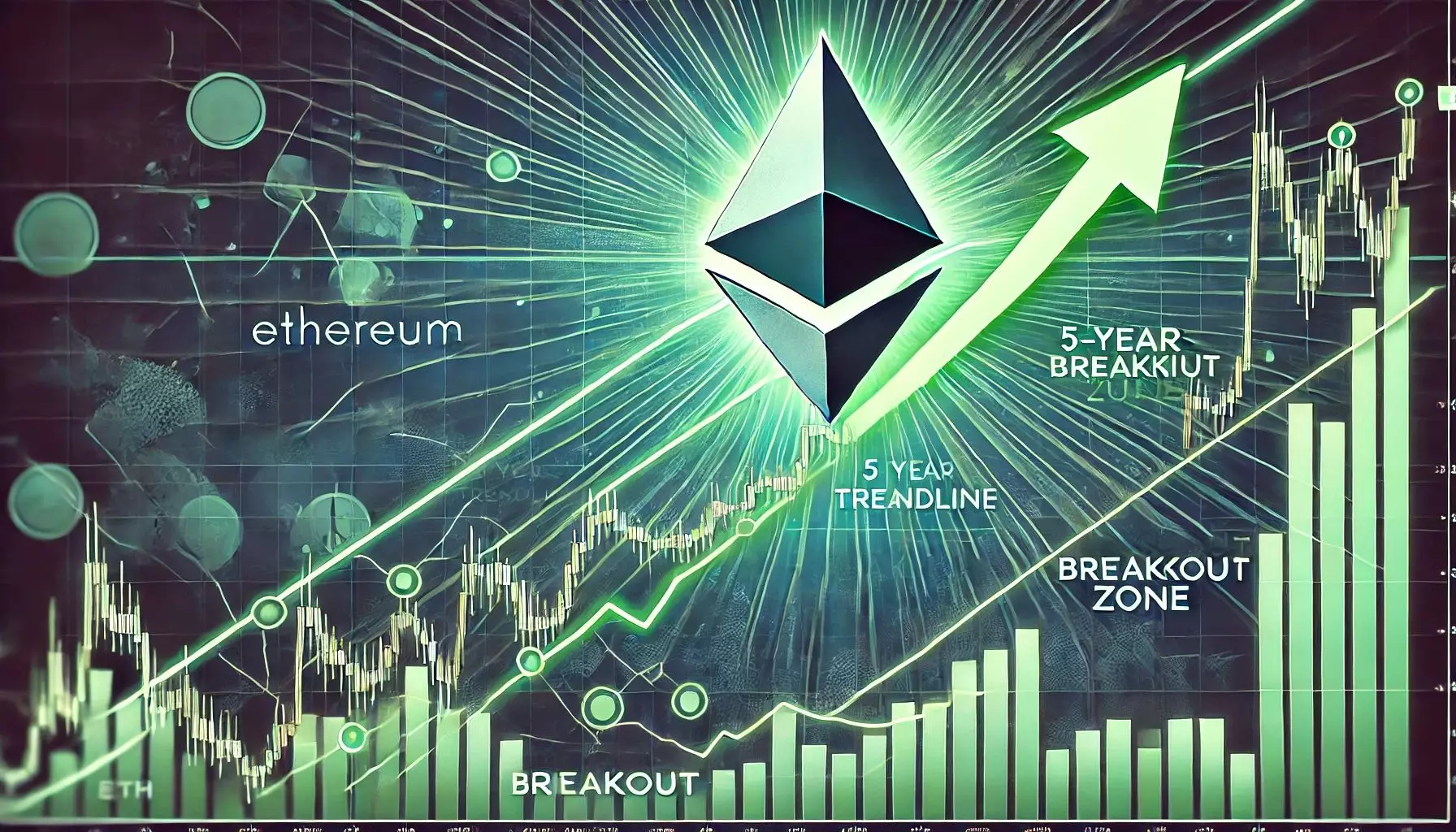Ethereum, once a beacon of progressive technology and decentralized finance (DeFi), currently finds itself trapped in a mercurial landscape dominated by market volatility and uncertainty. The cryptocurrency is precariously trading under the $2,000 mark, exhibiting an unsettling pattern between $1,800 and $1,900. This stagnation isn’t mere coincidence; it reflects the broader economic instability gripping global markets. As an advocate of center-right wing liberalism, I cannot understate the critical need for stability and clarity, both of which are desperately lacking in today’s chaotic marketplace.
The tumultuous environment, stirred by heightened fears of a U.S.-China trade war and unpredictable policy moves from the Biden administration, has fueled volatility not only in crypto markets but across equities as well. Institutional investors, who once confidently dipped their toes into the crypto pond, are now wary of sudden shifts that may disrupt their portfolios. This hesitation starkly contrasts with the past, when Ethereum was viewed as a robust alternative investment. The current situation implores us to examine why our nation—facing serious economic challenges—would allow such instability.
Testing the Waters: The 5-Year Trendline
Recent analyses underscore a pivotal moment for Ethereum as it teeters precariously on a critical 5-year trendline. This line has historically served as a stronghold for the altcoin during market corrections, acting as a safety net to absorb shocks. Yet, this support level also introduces a distinct possibility: if Ethereum can’t muster enough momentum to stay above this line, a spate of sell-offs could ensue, reinforcing the bears’ grip on the market.
The implications are profound. Should Ethereum breach this crucial trendline, we might witness a rapid decline, dragging prices toward the murky depths of lower demand zones around $1,600 to $1,700. However, should it hold its ground, the market could witness an unexpected resurgence, stirring bullish sentiments among investors. Indeed, it is a high-stakes game, one that not only showcases individual asset volatility but also serves as a reflection of the shaky foundations of the entire cryptocurrency ecosystem.
Investor Sentiment: Cautious but Hopeful
An undercurrent of caution permeates the sentiment of Ethereum investors, exacerbated by inflation concerns and a convoluted regulatory framework emanating from Washington D.C. This climate of uncertainty creates challenges for the adoption of cryptocurrencies like Ethereum, which demand a degree of confidence to thrive. The trend toward caution illustrates a reality: in times of economic strain, risk assets often become collateral damage.
Yet amid this sea of despondency, there remains a glimmer of hope. Certain forecasters predict a potential rebound for Ethereum, highlighting that other periods of difficulty have led to significant recoveries. Historically, cryptocurrencies have defied predictions and navigated turbulent waters. This inherent unpredictability instills both fear and fascination in investors—one moment they are curtailing their strategies, while the next they are ready to gamble on a rebound.
The $2,300 Barrier: The Key to a Major Upswing
For Ethereum bulls, the pivotal $2,300 mark looms large as an essential threshold for any hopes of a sustained recovery. A decisive push above this level, aligning with both the 4-hour moving average (MA) and exponential moving average (EMA), is critical. This suggests that bulls must not only reclaim this value but maintain it for any indication of a bullish turnaround.
Failure to reach these critical checkpoints could potentially trigger an avalanche of selling pressure, cementing the bearish trend that threatens to engulf Ethereum. Investors understand that these technical indicators are not just numbers; they symbolize broader market attitudes that hinge upon confidence, trust, and ultimately, belief in the inherent value of Ethereum.
The Fragility of Progress: A Call to Action
At this crossroads, Ethereum has become emblematic of broader economic challenges. The fragility of its position serves as a microcosm of society’s struggle to find stability in innovation while navigating the complexities of regulatory obligations. As individuals passionate about the ideals of liberalism, grappling with such disruption is a reminder of the urgent need for a coherent strategy that embraces progress while ensuring responsible governance.
While the present may appear bleak, the potential for resurgence remains—a resilient spark in the ongoing battle between innovation and regulatory oversight. Only time will reveal whether Ethereum can navigate these turbulent waters or succumb to the weight of bearish forces. The stakes have never been higher, making the upcoming days crucial for all who have vested interests in this revolutionary asset.

